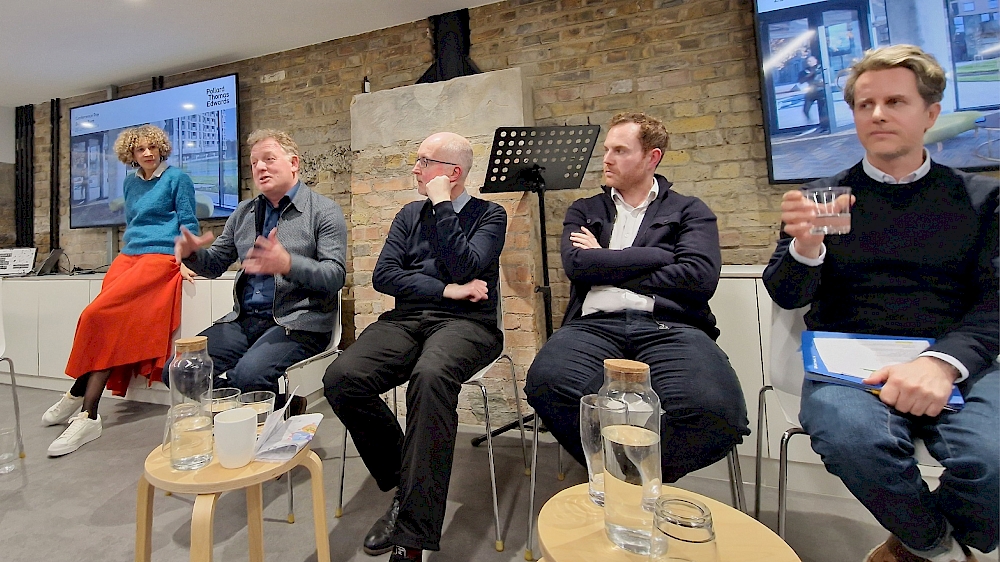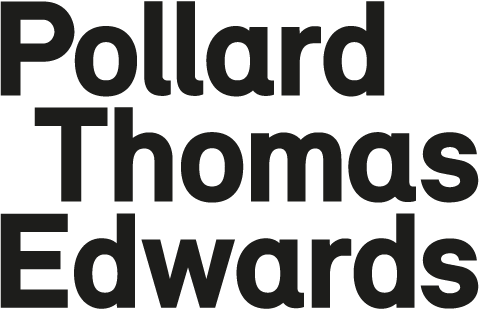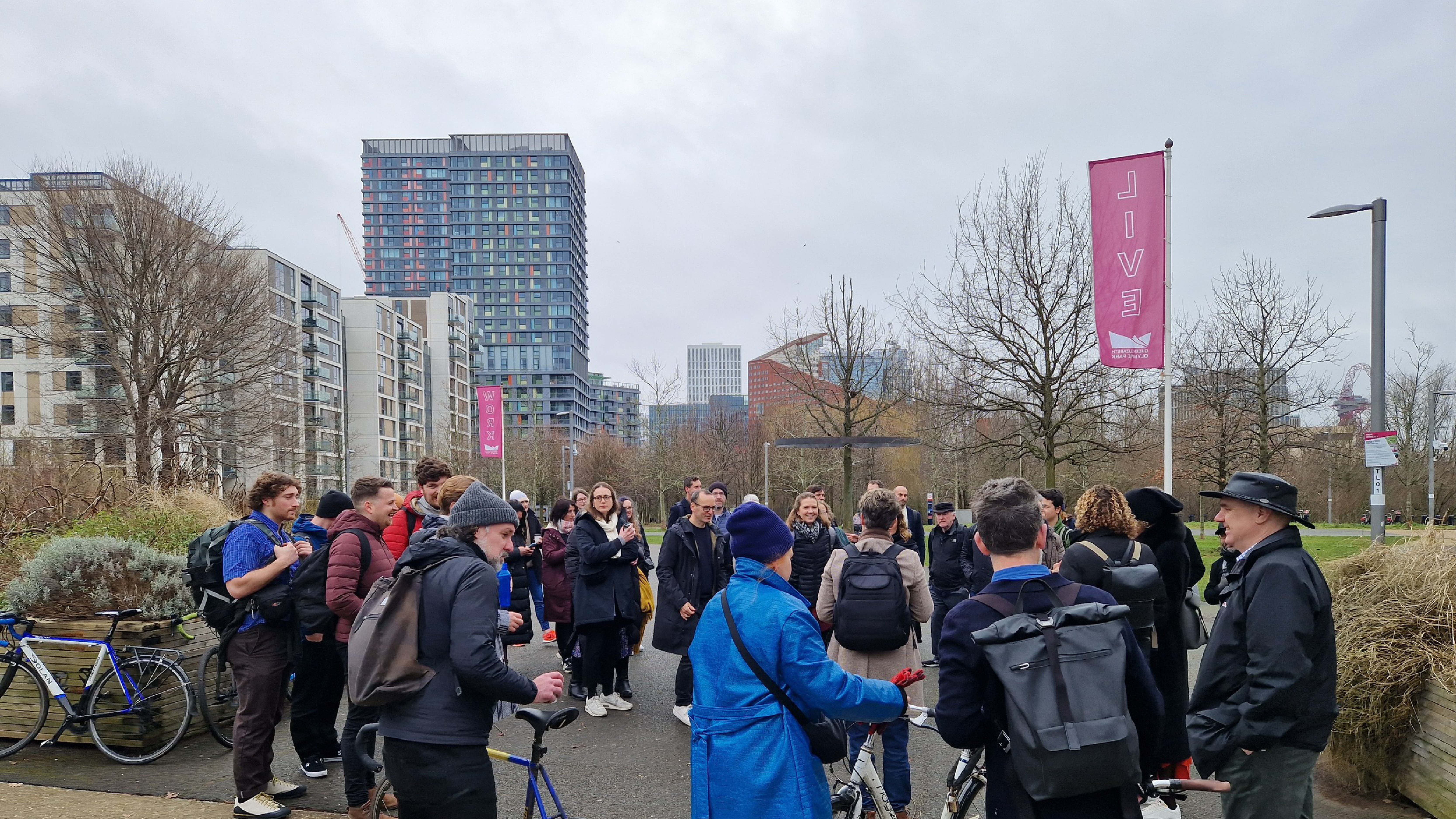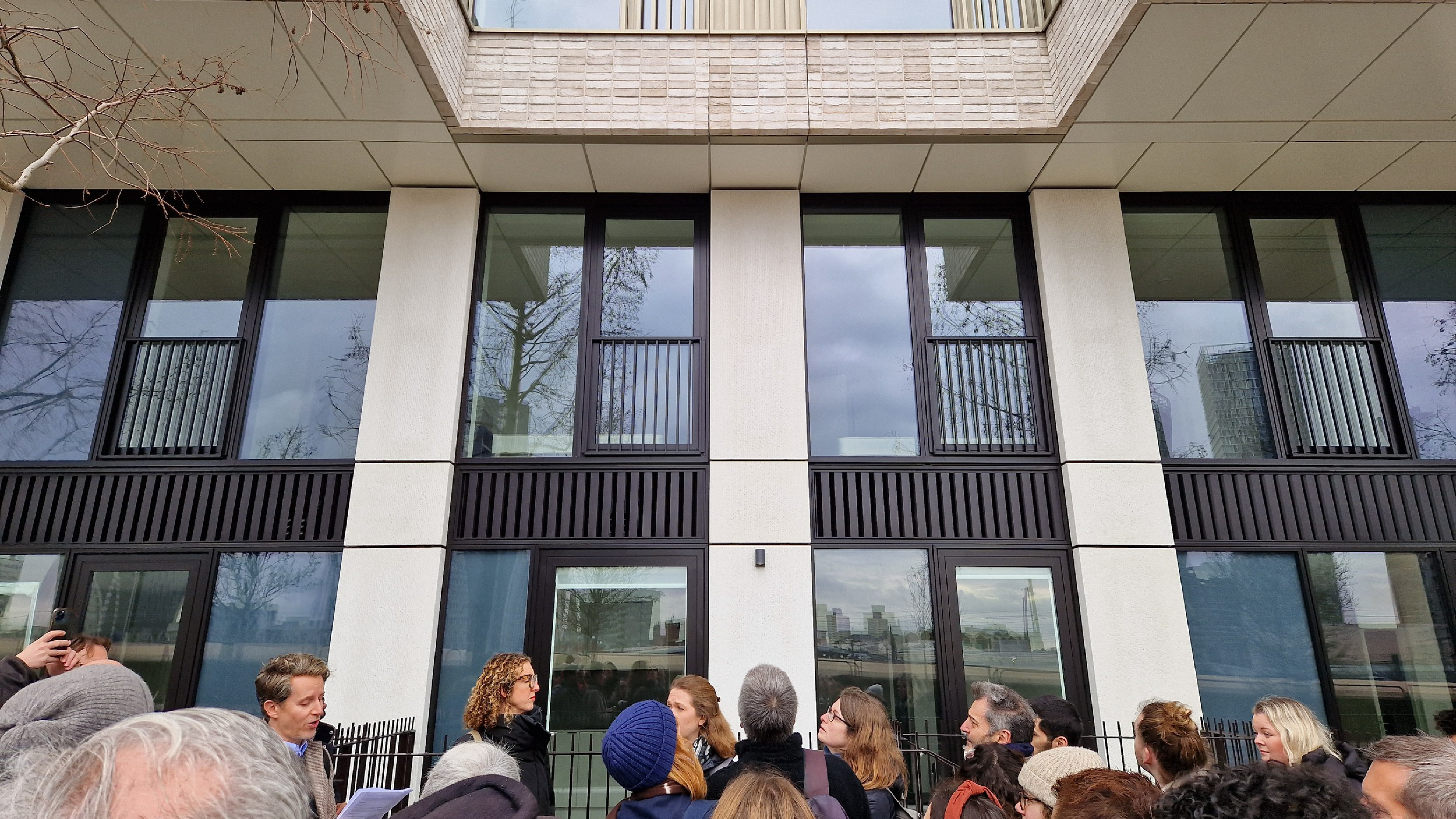PTE Conference Day: Build to Rent - January 2024
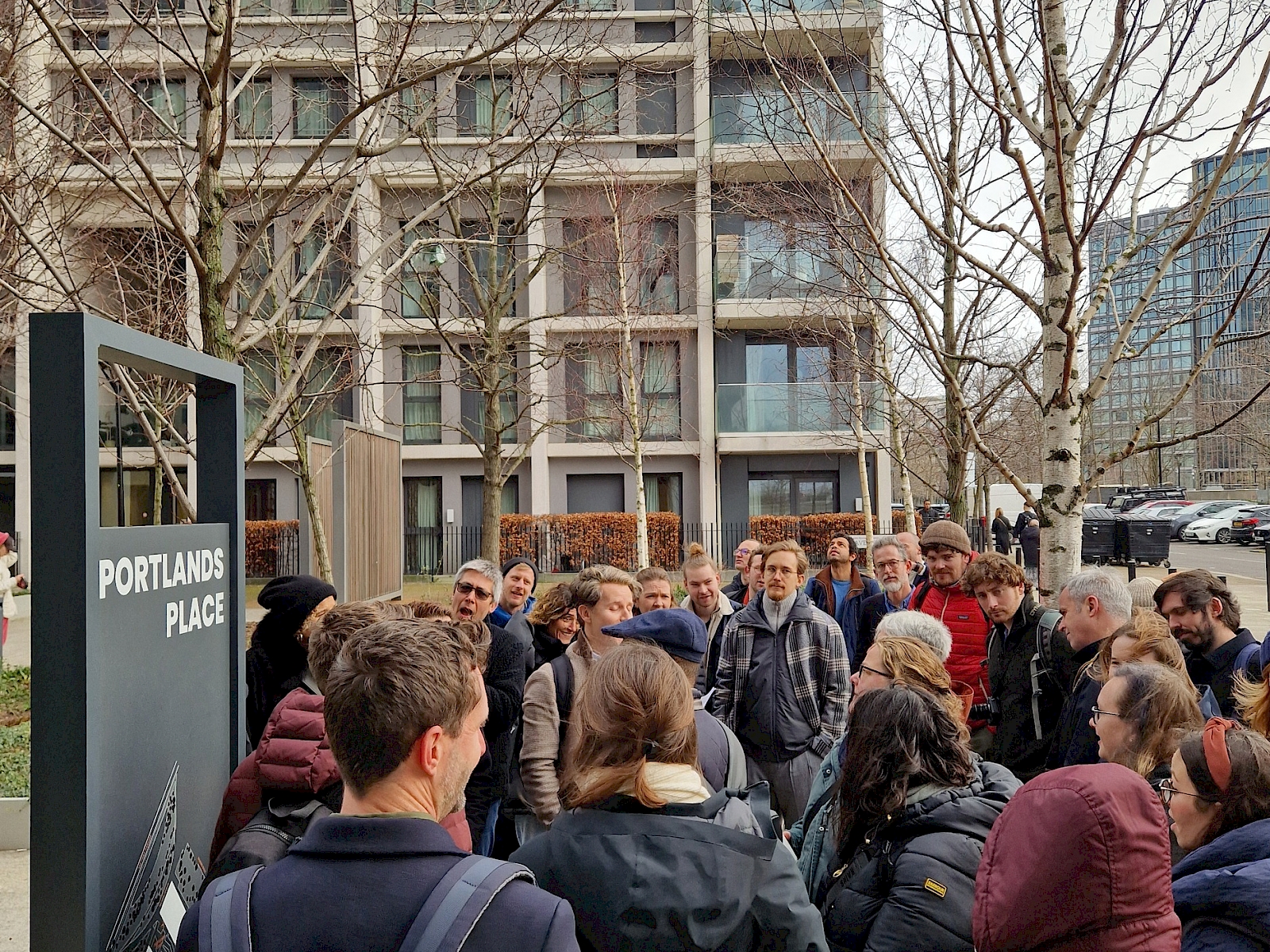
Build to Rent shaped our first monthly conference of 2024. We asked: ‘What does a BtR city actually look like?’
A PTE walking tour in Stratford, east London, in January: silvery skies, bare, bony trees, and all around us, Build to Rent housing, the focus of our first 2024 conference day.
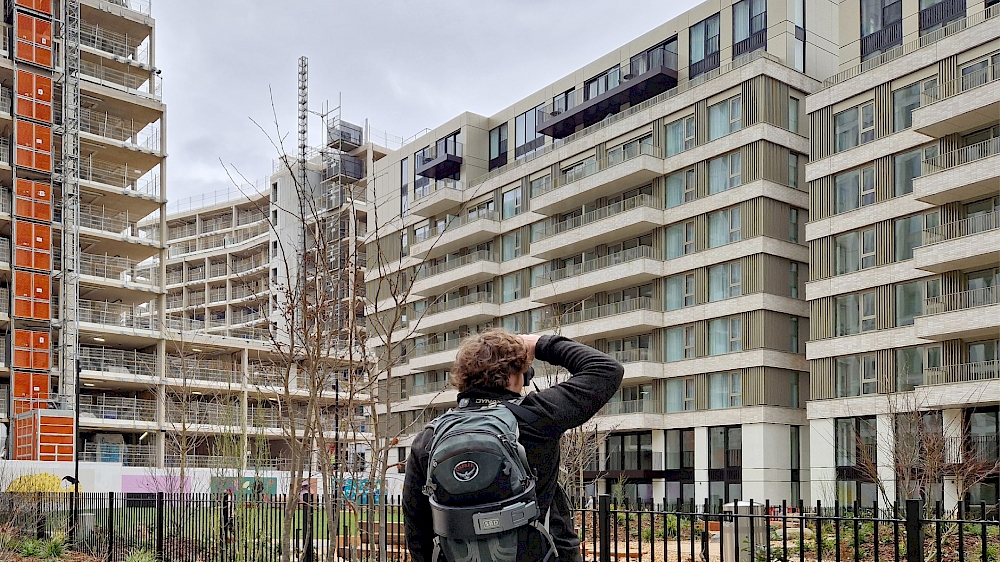
Stratford walking tour
We’re in the East Village on a fact-finding tour because for some of us, this is our introduction to this still evolving sector. We’re visiting four BtR projects, two by Get Living, one by Greystar and another by the Manhattan Loft Corporation.
We also have several in-house BtR specialists - and completions in our portfolio, mostly urban housing projects - but we’re keen to learn more given the market’s growth potential: nearly 15 per cent of new housing projects will be BtR by 2026, according to a recent Savills report.
If you’re already lost, a quick steer: BtR means an institutionally owned, professionally managed, purpose built development providing homes with long tenancies, for rent. Depending on the price-point, there’s often a raft of amenities – from rooftop gardens to in-house cinemas – for residents to enjoy (and to keep them from moving on somewhere else).
Despite the basic appeal of the idea – BtR blends boutique hotel living with prospective residents’ memories of communal living in student halls and more recent stays in Airbnb holiday rentals - wider societal changes have made 2024 the year BtR will properly take root in the UK’s towns and cities.
Our tour, led by partner Leigh Bullimore, begins at Get Living’s Portlands Place, a 500-home development for Qatari Diar, designed by Hawkins\Brown – two enormous towers with a spectacular bridge link almost halfway up - with amenities by Shepherd Robson Interiors.
It offers 1- and 2-bed homes (at £2,500 and £3,000pcm) alongside prestige extras, including the aforementioned rooftop garden and private cinema.
Our next port of call is another Get Living development: the 482-home Victoria Plaza, designed by Lifshutz Davidson Sandilands. A one-bed home is £2,300 here with amenities such as painting studios and communal dining, and, as our colleague Viviana Muzi, who helped to design it in her previous job, explained, it was flipped to BtR, late in its development (fairly common in the sector).
Forty-two storey Manhattan Loft Gardens designed by SOM (the tower with the huge ‘notch’ halfway up) is in its own league: a one-bedder here is £3,400pcm (£5K for a two-bed home). It also incorporates a boutique hotel and two restaurants, turning the building, its backers say, ‘into a social engine’ with residents, hotel guests, and visitors intermingling in the generous lobby.
Our tour concludes with a close look at PRP’s 1,225-home development Coppermaker Square, where a one-bed home is £2,515pcm and the action-packed amenities include a pool and spa, cinema, rooftop gardens a gaming space and a gym.
As Leigh wraps up, he reminds us: ‘BtR clients want you to design from the inside out. Interior design, way more than for housing, is central to success in this sector.’
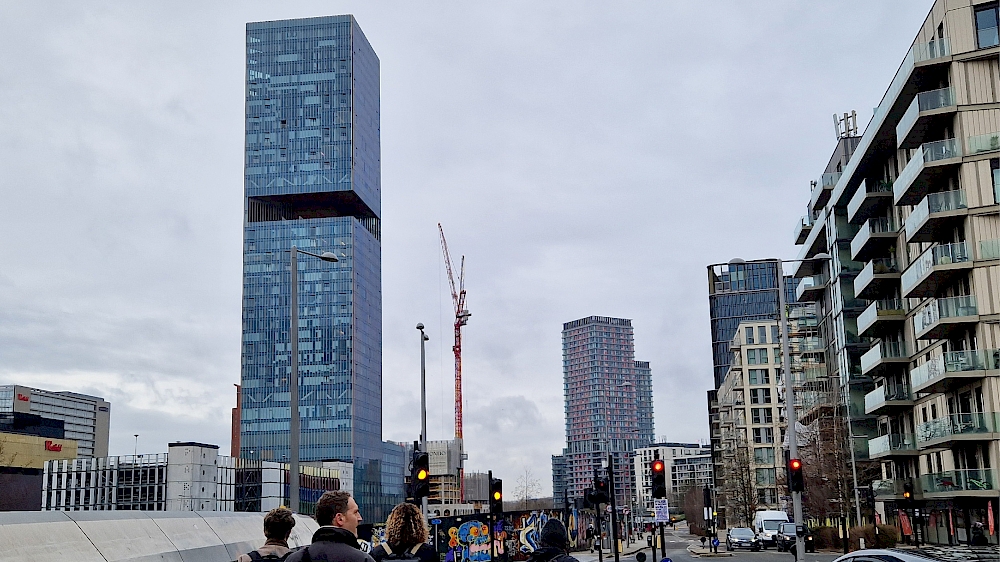
When we arrive back at our Diespeker Wharf studio, the PTE design team behind a 500-home BtR scheme, a vast edifice arranged as two towers - 29 and 14 storeys - presents its work so far. Partner Carl Vann outlines the key differentiators in the BtR sector, from having a sole landlord and a 24-hour management culture (vital to operators seeking to hold on to tenants and part of the variety BtR brings to our city’s housing mix) to how operators refer to residents as customers to how hotel design, more than housing, shapes thinking in the sector. The capital investment model is also different; crucially, the institutional pension fund backers growing the BtR model today, are more patient than their equivalents in the housebuilder plc model.
Next, associate Ben Whitehead picks apart the design and the processes and ideas behind it, exploring not only the offer BtR residents will enjoy, but also the wider social value the scheme will bring to the neighbourhood in which it will sit. So, as well as learning how landscape will flow up and around the building itself, breaking free from the ground floor, we also learn how getting the ground floor right – with an offer that resonates to a wider audience - is essential for the wider setting. As Carl explains: ‘When you bring hundreds of new people to live in a BtR scheme, it must offer something to local people already living there.’
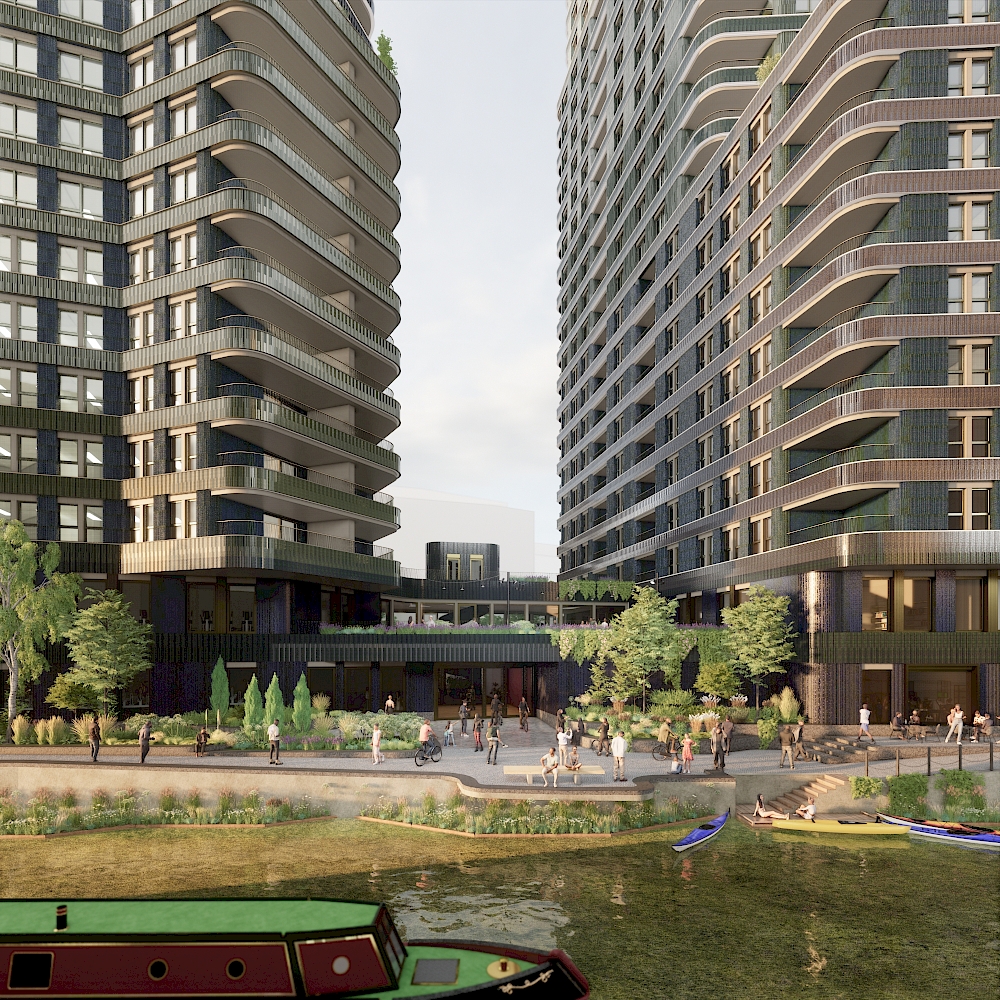
Thursday at Four panel: What does a Built to Rent city look like?
Our BtR conference day concludes with partner Kaye Stout chairing an expert panel. Each speaker makes a five minute presentation, addressing the question, ‘What does a Build to Rent city look like?’
Brendan Geraghty, CEO of the UK Apartment Association tells us ‘we’re in the business of belonging,’ and given the scale and potential impact a new BtR scheme can make to a neighbourhood (‘a small scale BtR scheme is 200 homes’), with such developments fast becoming regen’s key ‘anchor tenant’.
Julian Tollast, head of masterplanning and design at Quintain, which has overseen the UK’s biggest BtR neighbourhood at Wembley, raises Leigh’s earlier point: ‘Designing from the inside out is right, but we need architects who can design from the outside in, too’ he says, describing the larger schemes at Wembley as ‘backdrop buildings’ that speak confidently to their urban setting. We’re talking ‘district to doorknob scale with BtR.’ That attention to detail – the heaviness of your front door, the texture of the fittings, enhances a sense of belonging, of community. ‘Be space positive,’ he adds. ‘Design and operations have to work harder in BtR.’
Andrew Cusack, development manager at HUB, an early player in the UK BtR market (with more than 5,000 homes completed or under development) follows Julian, exploring how BtR developments in smaller urban centres can have a transformative effect. He cites One Maidenhead, designed by Studio Egret West and which includes a new public square alongside 429 homes, offices, retail and leisure, revitalising the Thames Valley town’s centre.
Leigh speaks about the importance of events and social media in promoting and maintaining a BTR scheme’s ‘culture’. Events, Leigh says, connect local businesses together. ‘Food discos, for example, with local restaurants, are really popular’, he adds. Leigh also evangelises upon the ‘BtR ground floor’, and how hard it works compared with more traditional housing. More schemes are seeing the benefits of providing a wider community offer too, embedding BtR developments more solidly into their local cultures.
A lively audience discussion ensues, with questions from the floor regarding the Scottish market (‘Rent controls have stifled BtR is Scotland’ says Gerraghty), retrofit (‘in terms of design, it could be great, but VAT needs sorting first’ – Leigh), the social value of BtR (‘nurturing community is an obligation of the recently launched BtR code of practice’, says Geraghty) and construction innovation (‘At the moment,’ says Cusack, ‘it’s being blocked by the insurance industry’).
